Unleashing the Power of the Soul: Spirit and Spirituality through Toni Cade Bambara’s The Salt Eaters and John Bolling’s The Spirit of the Soul (Part II)
By Guest Contributor on November 23, 2014By Dr. Janice Liddell
Editors’ Note: We are pleased to publish part two of this two-part previously unpublished essay, which was originally written in the early 2000s. Part one can be read in its entirety here.
Appropriately, these unseen forces are also womanist in origin, for central to an ancient African cosmology is the spirit of the Feminine. In John Bolling’s paradigm, these forces are those of the “Dark Mother,” and his explanation of the role and function of the Dark Mother further illuminates the source and forces at work with Bambara (and Walker) as author/medium of her hallmark work. He says:
[t]he Dark Mother represents that multi-axial, multi-tiered reality of invisible forces which comprises the unconscious mind or soul. We have failed to validate the archetypal consciousness of the Dark Mother in western culture. We have continuously repressed and disowned Her. We have resisted the internalization and integration of Her Soul Forces into our conscious live. (xiii)
Only later was Bambara acutely able to recognize the role of the Dark Mother as origin of her creativity and the breadth of her knowledge. A spiritually mature Bambara could say that
“colored people on the planet earth really know everything there is to know. And if one is not coming to grips with the knowledge, it must mean that one is either scared or pretending to be stupid” (Braxton 347).
This revelation can summarize the theme of The Salt Eaters (S.E.)., but it also speaks to a motivation behind its creation—that Bambara could tap into this source of knowledge and receive the gift of this novel, a gift which articulates the fundamental importance of the Soul to the safety and salvation of black people. A studied reading of S.E., using Bolling’s paradigm, reveals that this novel is a manual, albeit a creatively convoluted one, for “re-en-Souling” both the individual and the community. The novel demonstrates and is a reclamation of that latent power of black people, the power of spirit and spirituality in the conception and realization of all things. It also reclaims the feminine center of spirit and spirituality—of the Soul.
Karla F. C. Hollaway, in her brilliantly cogent analysis of culture and gender in black women’s writings, argues explicitly for an “Afrocentric interpretive model for black women’s literature” (22). She says that one of the problematic dimensions of traditional feminist criticism is that women do not serve as sources. She cites critic Lawrence Lipking’s charge that feminist criticism necessitates an imposition of women’s writings into “precious imposing bastions of literary theory” that are both Western and masculinist because feminist theorists can cite no mothers. But an Africentric theoretical framework, as she accurately posits, “acknowledges both a spiritual and a physical mother at its center” (22). Thus an Africentric paradigm which articulates that “the metaphorical screens of the innerself belong to the Great Black Mother—The Soul—Mother Africa Within, the Base and Mother Root of the human evolutionary tree” (11) is critical also to an analysis of spirit and spirituality in Bambara’ S.E., because of the novel’s reclamation of the Black Feminine principle as spiritual source. It is, in fact, this principle that propels the novel’s utopian vision.
Oppositional to its dystopian present, a present manifested by “moral disintegration and political impotence in the community, by the threat of nuclear disaster represented by Transchemical, and, above all, by the tensions between men and women” (Butler-Evans 178), the utopian vision of the novel is a mitigation of the material and spiritual. Bambara says it this way:
….I was struck by the fact that our activists or warriors and our adepts or medicine people don’t talk to each other. Those two camps have yet to learn…to appreciate each other’s vision, each other’s potential, each other’s language. The novel, then, came out of a problem-solving impulse—what would it take to bridge the gap, to merge those frames of references, to fuse those camps? (Tate 16)
In the novel, the male activists, by virtue of their preoccupation with the political and physical realms of reality, albeit community driven, are steeped in “the rational-logical documentation of external and material reality as extension and projection of the ego” (13). This is the materialist, modern, masculinist worldview that leaves its proponents “in a state known as the ‘dark night of soul.’” As well, it results in the fragmentation and disintegration that occurs in the novel. The integration of the feminine Soul or the “re-en-Souling”, however, restores balance and wholeness. This re-en-Souling and its process in the S.E. is the focus of the rest of this analysis.
Fundamental to Bolling’s perception of the Soul or, again, Mother Africa within, is its structural representation, that of the “Sacred Mandala,” multi axial wheel which he describes as:
A circle of balance consisting of many smaller interrelated and symmetrically arranged circles within the circles which force integration when anyone aspect of the soul gets too far out of balance. It calls from its deepest center—or Heart—for a return to the Source and sets in motion the forces of integration, transformation and change. (1)
The major principle of the Mandala is its center where the “major movement of growth, organization, maturation and evolution is one of centering and ‘centroversion.’” While centering is a voluntary choice to find ones way out of chaos and into the center, centroversion is the involuntary pull to the center by a more powerful spiritual force than the de-centered aspect. In most cases, the movement from this chaos involves both voluntary and involuntary movement toward the center (1). Whether voluntary or involuntary, the centering depends almost exclusively on a restoration of “ the Life Track” which consists of the “myths, beliefs, values, practices, rituals that comprise the Collective Soul of a culture” (1). For Africana people, even those whose acculturation is, on the surface, the result of Euro- masculinist, scientific “New World” influences, this Collective Soul is Africentric in its nature. It must recall the traditions of those who came before us as ancestors, whether in this cultural milieu or of those more distant and latent from Africa.
Filtered through this Africentric system, the new “returning” spiritual energy is able to be “properly” guided into the one Transcendent Body of Community (72).In this “place” of community over chaos, the individuation and healing of one affects the transformation of all and radiates outward. Bolling explains this:
No one transforms or is transformed in isolation. The ‘prima materia’ of personal transformation is as much in the outer world and the collective as it is in the inner world and the individual self. The Symbolic Energy Systems (Soul Forces) integrate the two. (72)
In the novel, the ultimate healing and transformation of both the individual and the community are able to take place because of this integrative re-en-Souling.
Velma Henry’s individual disintegration—marked by her inability to cope with her material reality, family issues, her job and her friends, and signaled ultimately by her attempted suicide—parallels that of Claybourne, Georgia. Claybourne, of course, represents the primal center from which all life sprang—fertile, a perfect balance of earth and water. Borne of the clay, Velma and the city’s other inhabitants are cradled in the potential of growth and transformation. But the contemporary Claybourne, a “major center, one of the chakras of this country” (13) is where nuclear waste and other environmental poisons threaten its existence. Fragmentation, disintegration, dis-ease, and death seem to be the only options for the unredeemed Soul-less community. Without the will to survive and appropriate intervention, Velma and Claybourne are both targeted for destruction. The concentricity of the spheres of fragmentation is real; their destruction portends the outward radiation of more and greater destruction. The structure of the Mandala is evident in this apocalyptic possibility, but it is also apparent in its potential for healing as implied by the novel’s structure. Hull assesses that
[t]he novel radiates outward in everwidening circles—to the Master’s Mind, the ring of twelve who hum and pray with Minnie; to the music room cluttered with staff, visitors and assorted onlookers’ to the city of Claybourne surrounding the Infirmary walls—a community which itself is composed of clusters (the Academy of the Seven arts, the café with its two round tables of patrons, La Salle Street, the park); to the overarching sky above and the earth beneath steadily spinning on its axis. From the center, the threads web, holding a place and weaving links between everything and everybody. (217)
At the heart of this “Sacred Mandala,” where the “aspect of the soul” is most out of balance, the centering and centroversion occur. This “aspect” is, of course, Velma Henry, who, as one character says, “has never been the center of her own life before” (240). Velma has succumbed to nearly every externally imposed invention of her self defined primarily by her roles in her marriage, on her job as computer analyst for Transchemical, and in her political organization—where six people were needed to replace her when she left. Her unsuccessful attempts to “withdraw the self to a safe place where husband, lover, teacher, worker, no one could follow, probe” motivates the suicide attempt—an ultimate attempt to withdraw.
But Velma is a daughter of the yam, whose “innerself,” despite her conscious allegiance to a Western-logical-material reality plane, belongs to the Black Feminine. With “everything…out of whack, the relentless logic she’d lived by sprung,” her intuitive-spiritual-soul centered cognition naturally kicks in with her recognition that “the eye of the heart. The eye of the head, The eye of the mind. All [see] differently” (7). Her realization is marked by her renewed ability “to see”—through “panes of glass and other substances”—and to astral travel. With this budding spiritual centering, the healing, led effectively by Minnie Ransom, “fabled healer of the district” and her own guide from the spirit world, Old Wife, can begin.
The setting of the healing is also significant to Bolling’s spiritual paradigm. The novel’s action, which occurs in less than two hours of physical time—eons, metaphysically—is set in the center of the Southwest Community Infirmary, ground zero—the nucleus of the Mandala. As an integration of science and Soul, Southwest appropriately utilizes the healing practices of the ancients and simultaneously employs modern scientific medical “advancements.”
Bambara manages also to incorporate in this dichotomous syncretism the gender dynamics that prove significant to the novel. Part of the reason for Velma’s breakdown is her attempt to fulfill the woman-roles as prescribed by the Western patriarchal worldview—a worldview she, too, internalizes. The Euro-medical conjuring that the lead-doctor attempts through “praying” the Hippocratic oath is neutralized by Minnie’s “matriarchal currency”—“powers of levitation, transformation, power to diagnosis and heal, power to harm and kill, transportation, astral travel, precognition, telepathy” (Bolling 62). Hers is, thus, a triumph of both Mother Africa within and women under male dominance. The healing must be total to be successful.
Bambara adroitly understands the role of the Feminine aspect in this total healing as evidenced not only by her negotiation of the novel’s gender politics, but also in her perspectives of matriarchal revision, (re)membrance, recursion a la Hollaway. What might be called Bambara’s “Feminist vision” (her vision of the spiritual which incorporates the Black Feminine—not to be confused with the “feminist” vision of gender politics) most clearly articulates a recognition in the position of the pre-Christian Black Goddess who was not only the Mother of man, but also the author of his being. She was “the deity who infused all creation with the vital blood of life” (Walker 346). This view held sway across the ancient world until the strength of the Goddess was harnessed to support patriarchal theologies just as the strength of women’s nurturing, caretaking instinct was harnessed to a patriarchal marriage system supporting men (346).
This is the power that Bambara reclaims for women and this power is the “force” of the novel. Minnie, as healer, in fact, is not unlike Jesus who upon encountering the infirmed man in Jerusalem queries him, “Do you want to be made whole?” (John 5:6). Minnie, obviously Africentric with her” bright-red flouncy dress,” “two different strips of kinte,” “a minor fortune of gold, brass and silver bracelets,” and her head wrapped “in some juicy hot pink gelee,” opens the novel with her query, “Are you sure you want to be well?” Her question signals that she knows, as does Jesus, that health/wholeness is a choice and that one must be willing to participate in the synthesis. This recognition also initiates the synergy of centering (Velma’s voluntary participation) and centroversion (Minnie “pulling” Velma to the center) that must occur for a successful healing.
Minnie, as guide, along with Old Wife, is mediator of the sacred and serves as the conduit for the re-en-Souling—roles held by the Goddess prior to the arrival of Jesus the Christ. While Jesus’ power is acquired simultaneously from his father-son relationship to God and his role as God-incarnate, Minnie’s power is more akin to that described by Bolling as “built up spiritual-psychic power through [the] successive life cycles and proper relationship to and respect for Soul forces” (62).
Bambara’s (re)membering of the Goddess in/to the community, especially the community of disempowered women, connects the voice of the Goddess to those from which she has been severed (Holloway 25). It is this connection which, through the successive life cycles of generations of women from pre-history to the present—including the spirit life of Old Wife— shores up Minnie’s spiritual-psychic powers and enables her to maintain her position as chief healer in the community. As articulated by Bambara, this power is initiated with the lifecycle of the history’s first unnamed, undifferentiated circle of women. These primordial women—always mothers, mothers of the earth, mud mothers—signify the creative and regenerative powers of women. Their recursive appearance signals their connection to Velma, to the community of women who surround her healing, and to Minnie as healer. The mud mothers have always been with Velma; have attempted to communicate with her, to guide her to the ways of her own survival:
In the attic they came in the mirror once. Ten or more women with mud hair, storing yams in gourds and pebbles in cracked calabash. And tucking babies in hairy hides. They came like a Polaroid. Stepping out of the mouth of the cave, they tried to climb out of the speckled glass, talk to her, tell her what must be done all over again, all over again, all over again. (S.E. 255)
They have always come when she called, come to offer solutions for and answers to her perplexing and debilitating life problems. But Velma has refused to listen to the restored voices of her historically silenced primal sisters—daughters also of the yam—whose messages seem desperate and cautionary:
Something crucial had been missing from the political/economic/social cultural aesthetic/ military/ psychosocial/ psychosexual mix. And what could it be? And what should she do? She’d been asking it aloud one morning combing her hair, and the answer had come tumbling out of the mirror naked with serrated teeth and hair live, birds and insects peeping out at her from the mud-heavy hanks of the ancient mothers’ hair. And she had fled feverish and agitated from the room, fled lest she be ensorceled, fled finally into a sharp and piercing world, fled into the carbon cave (259).
She flees from their messages and, as Hull says, she flees also “from wisdom which is primitive, intuitive, unconscious; from thought, imagination, magic, self-contemplation, change, ambivalence, past memories and images, the multiple possibilities of her soul, passage to ‘the other side’” (225). Essentially, Velma has fled from the Dark Feminine. But it is the combined recursive power of the Dark Feminine, the unbroken circles and cycles of “the African within” that restores her—the power manifestations of the primordial mothers; of the spirit-knowing ancestors who planted the Old Tree as a gift to the generations to come; of the Master’s Mind, the zodiacal ring of twelve praying “disciples” who serve as attendants to Minnie; of the collective spirit of the Seven Sisters whose fundamental reason for being is to foment growth and transformation; of Nadeen, the pregnant teenager whose own epiphany at the healing showed “her another way to be in the world.”
When Velma rises “on steady legs, throws off the shawl that drops down on the stool a burst cocoon,” her spiritual metamorphosis is complete. But the transformation is not hers alone. Dr. Bolling argues that
If the new ‘returning’ spiritual energy is filtered through the africentric system…there is more of a possibility for proper development and correct guidance of these Soul Force energies. Proper guidance of these returning Soul Force Energies is important as they move us collectively into the formation of the One Transcendent Body of Community (72).
The transformation occurs throughout the Mandala. In the novel, the healing belongs to a galaxy of dis-eased characters and to Claybourne itself. Velma, as she finds her way “back to the roots of life” will be a model. For it is she who had found a home amongst the community workers who called themselves “political.” And she’d found a home amongst the workers who called themselves “psychically adept” (147). Velma has always had the potential to be the bridge, which incidentally, is one of Bambara’s primary aims in writing S.E.—“to link up our warriors and our medicine people.” With the restoration of her own spiritual balance—“the proper filtering of the spiritual energy through the Africentric system” Velma’s integration of the material-logical and the spiritual-intuitive is complete. At the moment of Velma’s healing and the simultaneous arrival of the thunderous cleansing rain—which in some mythologies is a symbol of “spiritual influences of heaven descending upon earth (Cirlot 259)—transformations are initiated throughout Claybourne, restored now as a cradle of growth and transformation. More than one character would remember that the unusual storm ushered in “the beginning.” While some of these transformations culminate in a yet to be realized future—Fred Holt’s and Doc Meadows’, for example—the novel’s ending portends a healing that will radiate throughout the Sacred Mandala—from the individual to “[t]he planet of complete and total change” (282).
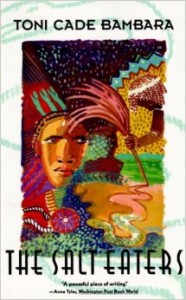 Numerous critics and students of the novel have demonstrated that The Salt Eaters, as a creatively and critically large work, can respond to any number of socio-political-philosophical-critical gazes. From the scientific to the feminist to the socio-religious to wherever else a reader might be bent on going, The Salt Eaters can either guide or accompany. The novel is, in fact, textual confirmation that, as Bambara says,
Numerous critics and students of the novel have demonstrated that The Salt Eaters, as a creatively and critically large work, can respond to any number of socio-political-philosophical-critical gazes. From the scientific to the feminist to the socio-religious to wherever else a reader might be bent on going, The Salt Eaters can either guide or accompany. The novel is, in fact, textual confirmation that, as Bambara says,
everything is one in this place, on this planet. We and everything here are extensions of the same consciousness, and we are co-creators of that mind, will, thought (Tate 24).
Such an advanced epistemological grounding cannot help but produce a work of such monumental epistemological proportions and ontological importance, especially for those on their own “soul quest.” Bambara is a medium, a seer, “messenger, teacher, healer, clairvoyant, clairaudient, clairfeelant, clairdoent” called to her vocation and her roots. Contrary to the belief that The Salt Eaters is “all music and metaphor, not intended to convince anyone of anything” (Hull 219), the novel is channeled through the wise Shaman to teach that the life-essential balance and harmony of being begins first with the best of one’s own traditions; the understanding of one’s own symbols and language, the adoration of one’s own goddess, the vision of the sacred in one’s self. As Bambara would, no doubt, concur, the power of transformation lies in the spirit of the people.
********************
Special thanks to the New York University Faculty Resource Network for providing a month-long Scholar-in-Residence grant (2000) at NYU for the development of this paper.
Works Cited
- Bambara, Toni Cade. The Salt Eaters. New York: Random House, 1980.
- Bambara, Toni Cade. “What it is I Think I’m Doing Anyhow.” The Writer on Her
- Work: Contemporary Women Writers Reflect on their Art and Situation. Ed. Janet Sternburg. New York: W. W. Norton & Company, 1980.
- Bolling, John L. The Heart of Soul: An Africentric Approach to Psycho-Spiritual Wholeness: A Manual of the Rites of Passage to a Soul-Centered Worldview. New York: Mandala Rising Press, 1990.
- Butler-Evans, Elliott. Race, Gender, and Desire: Narrative Strategies in the Fiction of Toni Cade Bambara, Toni Morrison, Alice Walker.Philadelphia: Temple University Press, 1989.
- Chandler, Zala. “Voices Beyond the Veil: An Interview with Toni Cade Bambara and Sonia Sanchez.” Wild Women in the Whirlwind: Afra-American Culture and the Contemporary Literary Renaissance. Ed. Joanne Braxton and Andree Nicola McLaughlin. New Brunswick, Rutgers University Press.
- Cilot, J. E. A Dictionary of Symbols. New York: Philosophical Library, 1962.
- Holloway, Karla F. Moorings & Metaphors: Figures of Culture and Gender in Black Women’s Culture. New Brunswick: Rutgers University Press, 1992.
- Hull, Gloria T. “‘What it is I think She’s Doing Anyhow’: A Reading of Toni Cade Bambara’s The Salt Eaters.” Conjuring: Black Women, Fiction, and Literary Tradition. Ed. Marjorie Pryse and Hortense J. Spillers. Bloomington: Indiana University Press, 1985.
- Sheftall, Beverly G. “Toni Cade Bambara Speaks.” Sturdy Black Bridges: Visions of
- Black Women in Literature. Ed. Roseann Bell, Bettye J. Parker, and Beverly G. Sheftall. New York: Anchor Books, 1979.
- Tate, Claudia, ed. Black Women Writers at Work. New York: Continuum, 1983.
- Walker, Barbara G. The Woman’s Encyclopedia of Myths and Secrets. San Francisco: Harper, 1983.
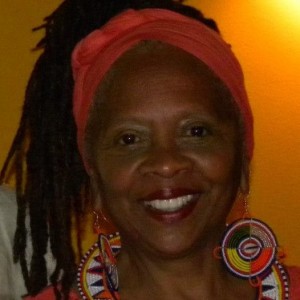 Dr. Janice Liddell recently retired as Assistant Vice President for Academic Affairs and Coordinator of Faculty Development at Atlanta Metropolitan State College. She also served in several capacities at Clark Atlanta University for over thirty years, including professor, department of English chairperson and director of faculty development. She is the author of a children’s book and coeditor of a collection of literary criticism; as well, she is author of several published articles, poems and has had several plays produced nationally and internationally.
Dr. Janice Liddell recently retired as Assistant Vice President for Academic Affairs and Coordinator of Faculty Development at Atlanta Metropolitan State College. She also served in several capacities at Clark Atlanta University for over thirty years, including professor, department of English chairperson and director of faculty development. She is the author of a children’s book and coeditor of a collection of literary criticism; as well, she is author of several published articles, poems and has had several plays produced nationally and internationally.
You may also like...
2 Comments
All Content ©2016 The Feminist Wire All Rights Reserved

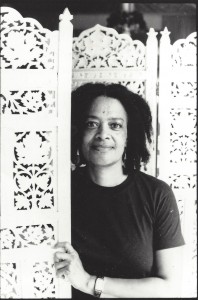

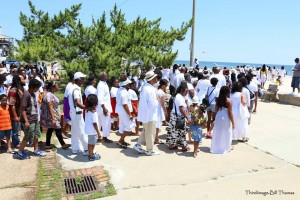
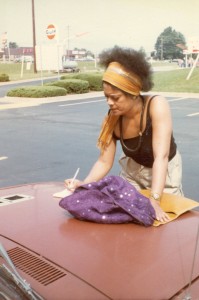
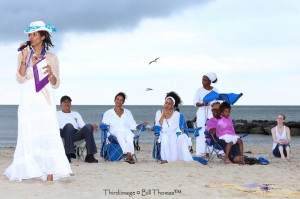
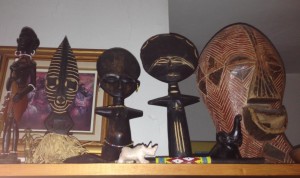
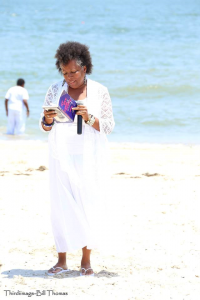
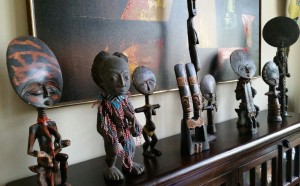
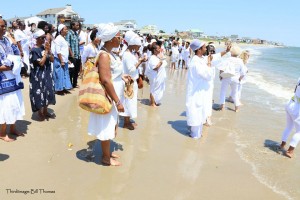
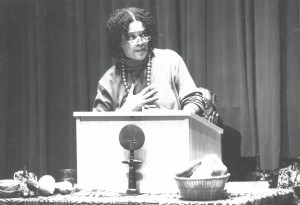
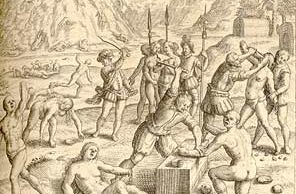
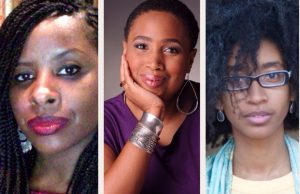
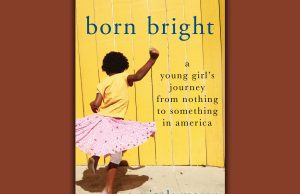
Pingback: Unleashing the Power of the Soul: Spirit and Spirituality through Toni Cade Bambara’s The Salt Eaters and John Bolling’s The Spirit of the Soul (Part I) - The Feminist Wire | The Feminist Wire
Pingback: Afterword: Toni Cade Bambara's Living Legacy - The Feminist Wire | The Feminist Wire